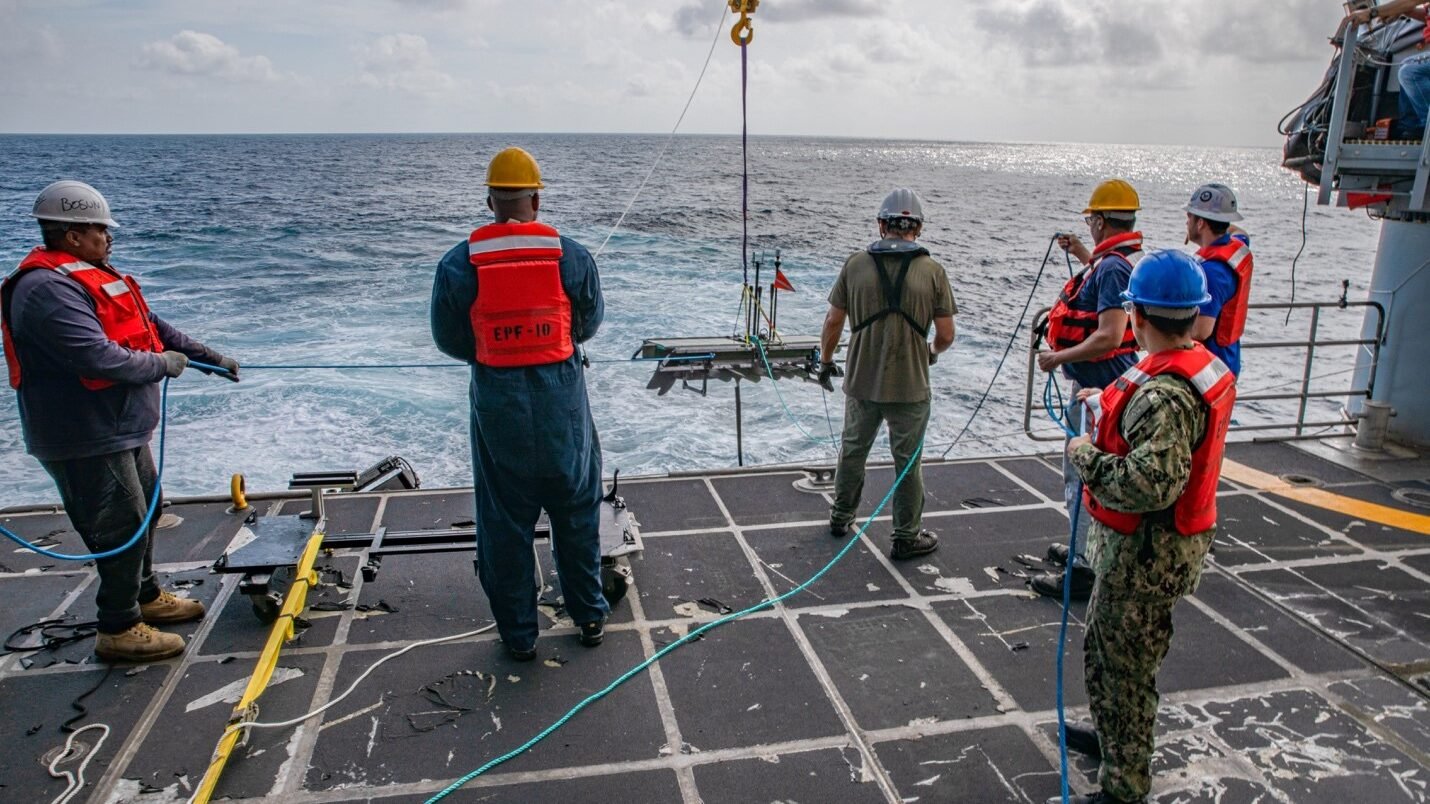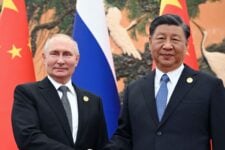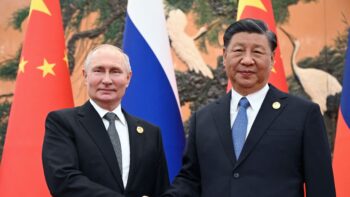
Sailors and civilian mariners launch a Wave Glider Unmanned Surface Vehicle from the fantail of expeditionary fast transport ship USNS Burlington (T-EPF 10) as a part of the UNITAS Integration Campaign. (U.S. Navy photo by Mass Communication Specialist 2nd Class Conner Foy)
WASHINGTON — The US Navy, in partnership with numerous South American countries, today will wrap up UNITAS, a multinational maritime exercise that the service’s top leaders said will mark a true influx of operationally ready unmanned technology into 4th Fleet.
This year’s exercise, which was hosted by the Colombian Navy and began on July 11, featured 26 warships, three submarines, 25 aircraft, 7,000 personnel and 20 partner nations, according to Navy statements. The Pentagon says UNITAS is the “longest-running multinational maritime exercise in the world,” beginning back in 1960 and conducted annually since.
This year was particularly significant for the US Navy, whose leaders, Chief of Naval Operations Adm. Michael Gilday and Secretary Carlos Del Toro, announced in April they would use UNITAS as an initial milestone to begin flooding the fleet with operational unmanned technology. The Navy’s 4th Fleet is assigned to the Southern Command area of responsibility.
“The 4th Fleet area of operations will provide us with an environment best suited to operationalize the concepts of Task Force 59 that’s worked tirelessly to develop to increase our maritime domain awareness,” Del Toro said during the Sea Air Space exposition held in Washington earlier this year.
RELATED: Unmanned Ships Deploying To SOUTHCOM, As Navy Seeks To Prove Technology ‘Ready To Scale’
Task Force 59, an office based in Bahrain under 5th Fleet, has been widely praised by Navy leadership for its unmanned technology experimentation. Cmdr. David Edwards, the director of technology and innovation at US Naval Forces Southern Command, told reporters on Thursday the original plan was to establish a Task Force 49 within US 4th Fleet in an attempt to replicate the successes at 5th Fleet.
Edwards said the decision was later made to integrate Task Force 49 directly into the command’s organizational structure and turn it into the “N9.” “N9” is an internal naming convention the Navy uses for offices focused on technology requirements. In other words, what would have been “Task Force 49” is now its own office inside 4th Fleet directly responsible for determining which unmanned systems will be of value to the fleet.
“In the planning heading up to UNITAS, we stood up the N9, which is our technology and information directorate, in order to fully incorporate our unmanned and hybrid systems into the normal battle rhythm of the fleet staff and the planning process itself,” Edwards said. “Unmanned systems were incorporated throughout [UNITAS]. It wasn’t a side experiment that we were doing alongside [other] units. It was fully integrated… and that’s our goal moving forward is to keep those systems integrated.”
Rear Adm. Jim Aiken, commander of 4th Fleet, said his command has been doing “significant experimentation” with unmanned technology since 2008. He said one of the “most interesting” engagements done at this year’s UNITAS was a SINKEX — the short name for an evolution in which the Navy intentionally sinks a ship.
“With the different unmanned surface and unmanned air vehicles that we had for the exercise, we were able to provide maritime domain awareness [and] range clearance,” he said. “We were able to identify the target, and we were also able to provide battle damage assessment. So, it was a tremendous opportunity to build on what SECNAV and the CNO discussed.”
Del Toro and Gilday both traveled to Columbia and observed various parts of UNITAS this year. Navy officials have previously stressed they see unmanned technology as useful for countering two major problems plaguing various countries in 4th Fleet’s area of responsibility: drug running and illegal, unreported fishing.
“Economic security is national security,” Del Toro said during the opening ceremony. “We must continue to work together to counter the common maritime challenges that threaten our way of life, and that run contrary to the rules-based international order.”
Some of the unmanned systems used in the exercise this year include the Aerosonde small unmanned aircraft system, Greenough advanced rescue craft, wave glider unmanned surface vehicle, Kingfish unmanned underwater vehicle, LB Glider, and the Marine Corps’ tactical resupply unmanned aircraft system, according to a Navy spokesperson.
What a Chinese academic’s takedown of Russia says about Beijing’s view of Moscow
China watchers are asking whether Feng’s article is a step in the evolution of differences in Chinese and Russian positions — or is it an overt signal of internal Chinese Communist Party debate over Beijing’s policy of supporting Putin’s war in Ukraine?


























